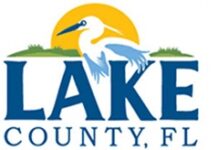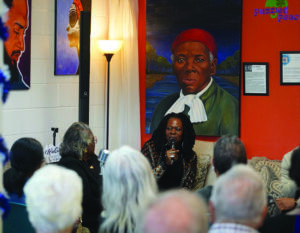
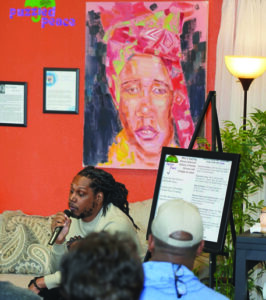
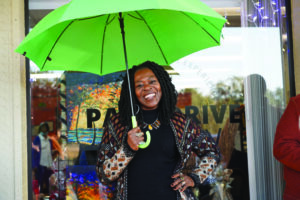
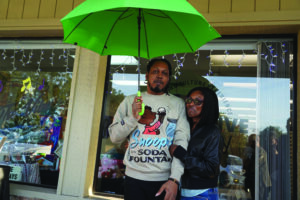
BY HARRY COVERSTON, GUEST WRITER TO THE TIMES
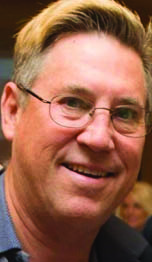
SANFORD – Author Toni Morrison relates a conversation she had with a friend shortly after the 2016 election. When asked how she was, Morrison resisted the temptation to give the expected response of “Fine,” honestly blurting out “Not well. Not only am I depressed, I can’t seem to work, to write; it’s as though I am paralyzed, unable to write anything more…. I’ve never felt this way before, but the election….” Her friend cut her off mid-sentence with his response: “No! No, no, no! This is precisely the time when artists go to work—not when everything is fine, but in times of dread. That’s our job!”
Morrison would take that rejoinder to heart, later echoing his words with her own: “There is no time for despair, no place for self-pity, no need for silence, no room for fear. We speak, we write….This is how civilizations heal.”
Author and artist Valada Flewellyn implicitly understands that response. When Florida’s governor proclaimed that African American History would no longer be taught in the state’s schools and colleges, Flewellyn wasted no time in despair and self-pity. Instead, she found herself inspired to organize a response based in art and poetry which she has called the Puzzled Peace Initiative (PPI).
The title word Puzzled references the incomprehensible nature of the blatantly racist decision to erase Black faces from the history Florida’s children will learn. Peace, on the other hand, is a double entendre. It references the pieces of history missing from any puzzle that would provide a full picture of Florida’s history. And it also recognizes a profound truth: Without those missing pieces, there can be no peace. As Pope Paul VI said in 1972, “If you want peace, work for justice.”
It was such a recognition that would inspire the birth of Flewellyn’s Puzzled Peace Initiative. She set about identifying and recruiting artists in the region whose work provided insights into the African American community and its history in our state, obtaining spaces for displays of their art in locations ranging from public libraries to bookstores and galleries across the region. She then began to schedule events where the artists could come to talk about their work.
On Sunday, December 8, the latest exhibition of the work of Puzzled Peace artists was held at the Park Drive Gallery in Sanford. Two artists, Joy Hayes and Donnell Adams, came to discuss their work on display at the gallery. They were interviewed by Dr. Rebekah McCloud, author and an award-winning educator who spent more than 20 years at the University of Central Florida College of Education.
Joy Hayes specializes in portraits, many depicting famous figures of human liberation struggles historically. Hayes has created her artwork – including a number of murals and illustrations of religious books – over the last 45 years, many of which she produced as she was busy raising five children. As she spoke at the Puzzled Peace presentation, the vibrant, imposing images of her cultural heroes peered back at the audience from the gallery walls. Among them Nipsey Russell, Jimmi Hendrix and Bob Marley.
In one portrait, Hayes channeled the spirit of Frida Kahlo, the Mexican artist often overshadowed by her husband, Diego Rivera’s murals, Frida’s genius was largely expressed in self-portraits. Hays said she had always felt connection to Kahlo’s story, a vibrant, complex life marked by much suffering, on which Kahlo would draw to create her striking self-portraits.
The highlight of Hayes’s exhibit was an imposing vision of Harriet Tubman. Viewers can almost feel the presence of the freedom fighter who led 13 risky missions to rescue 70 enslaved people including family and friends, using the networks of antislavery activists and safe houses of the Underground Railroad to bring them to safety.
Along the way, someone had suggested to Hayes that she should paint Tubman, but it would take her two years before she could even engage that endeavor. Gradually, she came to realize she was called to produce that portrait. “I felt a need to honor her,” Hayes said, and she set to work creating her portrait from a black and white photograph of Tubman. For Hayes, “This was a spiritual undertaking. I just put the prayer out there and pulled in her energy to do the painting.” That decidedly comes through in the final result: “When you look into her eyes, you feel her presence.”
Along the way, Hayes would become attached to her final product. “People have asked me if I would sell her but I’m not ready to let her go just yet. But I will eventually. I want her energy to circulate.”
Donnell Adams has utilized oils, watercolors and pastels to create his works depicting Central Florida’s African American culture over the past 15 years. He took a four-year break from his creative work when he found that a medication regime had begun to limit his creative ability. While the prescription had helped him deal with his severe migraine headaches, it also blocked his creativity, so he stopped taking it. “Almost immediately the painting came back,’ he said.
For Adams, art is his life. “I create because I love to create. I attended art school after my time in community college. It changed my life.” Adams would win a student art show at the Crealdé School of Art. He said it was this recognition that gave him the push to get his work out into the public realm.
Adams’ signature piece is a vision of a Black woman bearing the African American practice of head-wraps. He had grown up seeing that practice in his own home and “I wanted to add to that history.” He said he does not know why the head wrap art spoke to him but soon he had produced five different head wrap paintings.
Comparing the head-wraps to the crowns of African queens, he said “There is a sense of the royal in these expressions.” But while he saw that modeled in his own home and among the women in his community, he did not see these expressions in any form of art except on the Cosby comedy series on television. “This stuck with me as I got older,” he said.
It is his awareness of his leaving behind his young adulthood that informs his artwork today. “If I had a message to young people about art, I’d say that they should insist on more Black art in teaching.” Adams said he understood why it is currently missing. “It doesn’t fit with the style [white educators] are trying to foster. It seems like they don’t want us to have this information. But it’s important. We need to show different colors, not just one.” Adams’ desire for a diversity in the art being taught students today is not relegated to Black artists and depictions. “[This is] not just about being more inclusive. [It’s] not just Black art, I want it all.”
Hayes joined in Adams’ critique: “None of the artists we learned about were Black. I think our culture might be more interested in the arts if they were present. Sadly, our culture doesn’t have a lot of value for artists.” She continued, referencing her work depicting Harriet Tubman, “Look at the eyes with all their sadness and pain. That’s who I am.” And, undoubtedly, many who look upon this painting might well see themselves in that depiction as well.
Valada Flewellyn closed the evening with her declaration. “We represent people who were outraged when .…we couldn’t teach African American history in the schools. So, what did we do? We created Puzzled Peace. We are telling the story anyway. We won’t be stopped.”
Toni Morrison would get that. She would say that, despite the current realities facing America, we have “no time for despair, no place for self-pity, no need for silence, no room for fear. We speak, we write…,” and we create art. And as we do, we know this is no small undertaking. Because, ultimately, “[t]his is how civilizations heal.”
Puzzled Peace artists will participate in an exhibit of their art and a panel discussion at the Orange County Regional History Center’s Heritage Day, January 25, 2025. For more information visit www.puzzledpeace.net.






